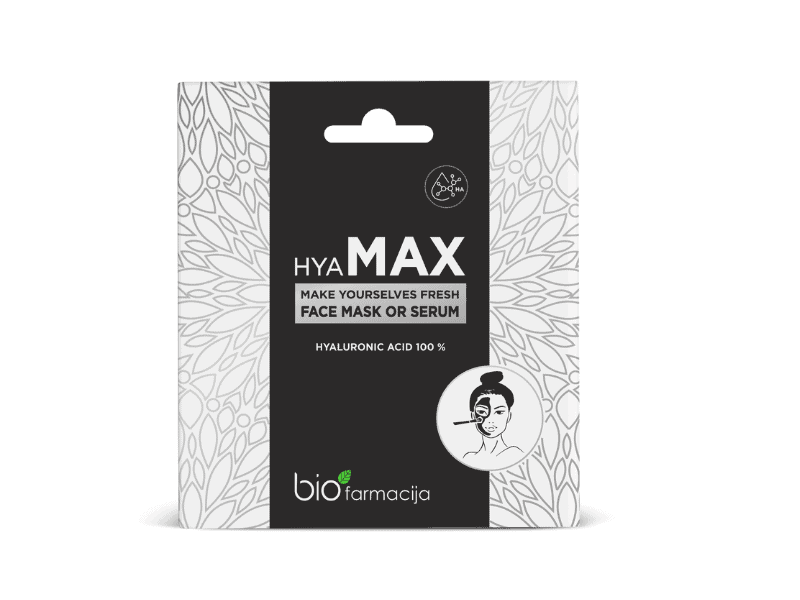Hyaluronic acid not only controls tissue moisture levels, but also protects and cushions soft tissues, participates in the transport of substances into and out of the cell, and controls the diffusion of substances into the intercellular space, including signalling molecules. It acts as a free radical scavenger and protects cells from oxidative stress, and is necessary for cell development and regeneration. Each of these functions is performed by hyaluronic acid molecules of a certain size. Molecules above 1 MDa form the intercellular matrix, while smaller molecules stimulate cell nourishment and repair. Very large molecules – above 3 MDa – act as a lubricant, protecting tissues from drying out. A very high molecular weight (3-20 Mda) is required to form a breathable barrier layer on top of the skin to prevent transepidermal moisture loss.
HYALURONIC ACID MOLECULES IN FILLERINA COSMETICS
Hyaluronic acid – 1.000 Da – immediate penetration into the deepest layers of the skin (ex vivo tests), ensures tissue density and wrinkle smoothing.
Hydrolysed sodium hyaluronate – 5.000 Da – immediate penetration into the deepest layers of the skin (ex vivo tests), ensures tissue density and wrinkle smoothing.
Hydrolysed Hyaluronic Acid – 50.000 Da – penetrates the middle and deep layers of the skin (ex vivo tests), fills wrinkles from the inside.
Sodium hyaluronate – 200,000 Da – penetrates the surface and middle layers of the skin (ex vivo tests), where it attracts large amounts of water, helping to smooth the skin’s micro-relief.
Sodium hyaluronate – 2,000,000 Da – penetrates the surface of the skin (ex vivo tests), helps ensure tissue density.
Sodium hyaluronate crosspolymer (Hyaluronic acid reticulated) Ensures a slow, continuous release of HIU into the skin. (ex vivo tests), helps ensure tissue density.



 Latviešu
Latviešu Русский
Русский